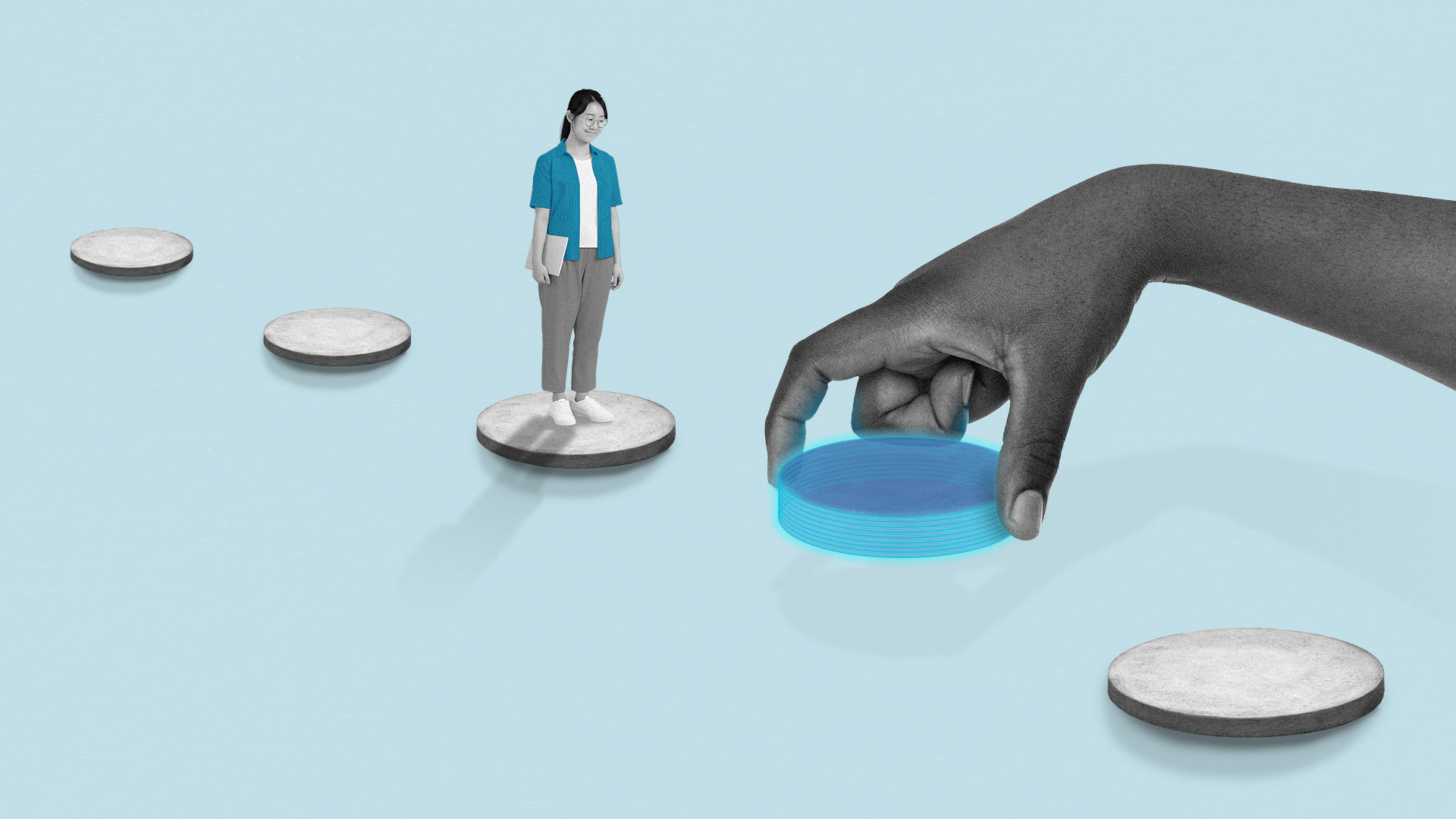The transition from college to career is one of the most significant shifts a learner will make. While most students enroll in higher education with employment in mind, the pathway from classroom to workplace isn’t always smooth.
Roughly 20% of students secure jobs before graduation. Within three months, another 32–46% are hired. By six months out, between 75–87% have entered the workforce. But these stats don’t tell the full story. Many graduates still struggle with the practical, emotional, and cultural shifts required to succeed at work—and employers are often left to fill the gap.
The question isn’t just how to prepare students for the job search. It’s how to ensure they thrive once they’re hired.
Why the School-to-Career Transition Is Still So Hard
While enrolling in college marks a step toward independence, the leap into the workforce is more complex. Students face new expectations that require rapid adjustment:
- Adapting to fixed schedules and fewer remote options
- Accepting higher professional accountability
- Demonstrating applied knowledge, not just recall
- Managing long-term projects and shifting priorities
- Navigating new workplace communication norms
- Relocating and managing emotional/social change
- Taking ownership of career development and long-term planning
- Gaining financial independence and managing obligations
- Dealing with early-career comparisons and self-doubt
If a degree signals academic readiness, how do we better support workplace readiness? And how can institutions and employers collaborate to ease the transition?
Barriers to Effective Partnerships Between Colleges and Employers
While institutions and corporations typically have different missions, both serve students and employees. Working together enables employers to build strong talent pipelines that enter the workforce with a readiness to contribute on day one.This requires coordination to avoid common challenges.
Balancing Academic Rigor with Real-World Training
Academia may over-index on theory; employers may focus too narrowly on day-to-day tasks. Strong programs merge both: real-world scenarios, shadowing, and applied workshops help learners bridge the gap and build confidence.
Focusing on Hard and Soft Skills
Success at work depends not just on technical knowledge, but on collaboration, communication, and creativity. Practicing these skills in academic settings helps students apply them with confidence in the workplace.
Establishing Shared Metrics for Employer-Education Success
Without agreed-upon metrics, collaboration becomes symbolic. Shared evaluation tools—such as completion rates, early performance indicators, and retention benchmarks—create mutual accountability and enable continuous improvement.
How Colleges and Employers Can Build Collaborative Programs
Collaboration—not duplication—is the path forward. Both parties benefit when students transition smoothly into meaningful roles. Here are key actions to take:
- Set Outcome-Driven Goals
Each party should define goals independently, then align them—anchored in real measures of student and employee success. - Adopt Modular, Adaptive Content
Stackable credentials and modular learning experiences help bridge skills gaps quickly—especially in fast-changing fields or soft skill development. - Co-Create Program Plans
Academic and employer partners should jointly define needs, co-design solutions, and commit to shared outcomes. - Emphasize Practical Application
Labs, simulations, and job-specific experiences give students a clearer picture of their future roles—and build real-world readiness. - Measure and Iterate
Use onboarding and performance data—productivity, retention, employee sentiment—to refine and improve programs over time.
When both sides treat the school-to-career transition as an evolving process—not a one-time handoff—partnerships become more resilient and responsive. Regular feedback loops and shared accountability help ensure that programs stay aligned with workforce needs and learner success.
Aligning for Impact—Your Next Step
Employer partnerships can be a strategic lever for both institutional success and business growth. By embracing modular design, co-creation, and practical application, colleges and universities can deliver programs that are both scalable and deeply relevant. And by working hand-in-hand with higher ed, employers gain access to talent that’s ready to hit the ground running. Ready to evolve your corporate partnerships? Let Noodle help facilitate the relationships and processes needed to move forward.
Let’s Talk.


